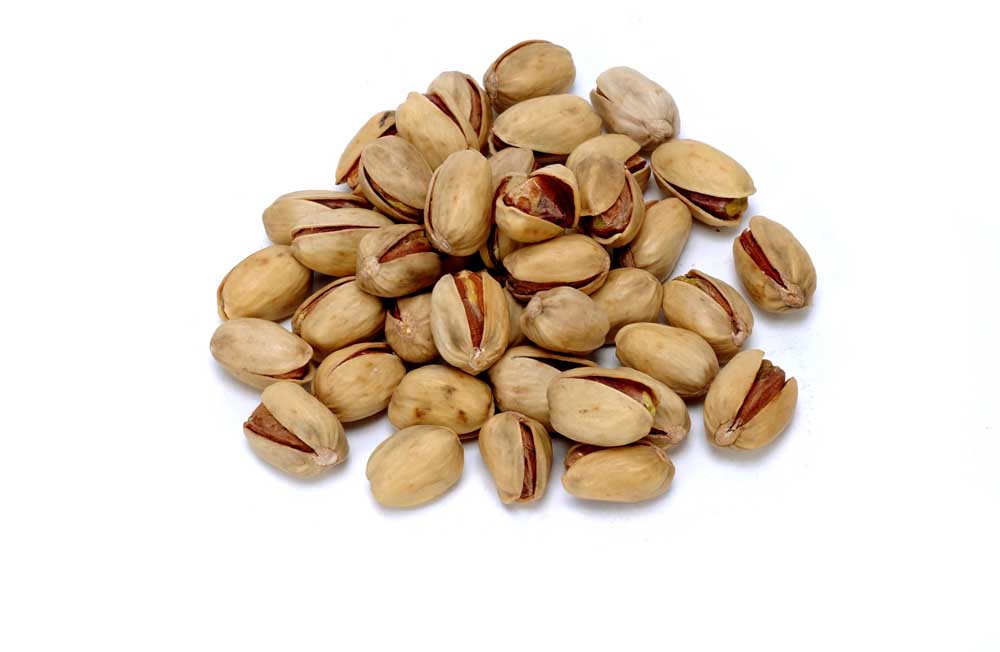Go green with pistachios
Published 12:00 am Tuesday, September 30, 2014

- Thinkstock
Healthful, delicious and growing in popularity, pistachios make green look great.
Finding new fans around the world, this California tree nut with the distinct color and taste is on a roll. (And it’s not just comedian and pistachio pitchman Stephen Colbert’s famous “bump.”)
“In China, they’re called the ‘happy nut’ because they’re always smiling,” said Thom Dille, of Lincoln, California, chairman of the 550-member American Pistachio Growers.
As they bring in the new harvest this month, pistachio farmers have a lot to smile about.
Thanks to a robust export market, pistachios have become a billion-dollar crop. Just 50 years ago, California’s commercial pistachio crop was nonexistent. The first commercial harvest in 1976 totaled 1.5 million pounds. In 2012, California, which accounts for almost all of the American harvest, produced almost 551 million pounds of pistachios.
About 250,000 acres of the central valley are now planted with pistachio trees, with about 180,000 acres at bearing age. As those newer orchards mature, the American pistachio supply should continue to grow, too. Pistachio trees yield about 3,400 pounds per acre.
Our appetite for pistachios has increased as more studies point to this nut’s potential health benefits. Studies show pistachios can support men’s health as well as cardiovascular fitness and eye health.
“Pistachios are unique,” said Palo Alto, California, nutritionist Arianna Carughi, a pistachio expert. “There’s not just one thing they’re good at, like high protein, but a combination of nutrients that they deliver.”
While providing plenty of protein, pistachios have the lowest fat and highest dietary fiber content of the major tree nuts, she noted. Pistachio’s green color as well as the nut’s yellow tint and purple skin are linked to several antioxidants and phytonutrients.
The nuts “contain compounds that make you feel full,” Carughi said. “That’s another advantage for pistachios over other nuts.”
As a snack food, pistachios have “built-in portion control,” noted Shape magazine, whose editors recommend pistachios as an office favorite. The effort needed to crack and pop them out of their shells tends to slow down consumption and prevent “mindless” munching.
Pistachios naturally combine their inherent nutty flavor with an underlying sweetness. That fruity note makes pistachios a natural choice for desserts.
“I love pistachios; even before I knew more about them, I loved them,” Carughi said. “They’re part of a Mediterranean diet.”
Pistachios have been part of Mediterranean cuisine for millennia, but more recent history made them a California star.
Before the 1970s, Iran supplied much of the world’s craving for this popular snack nut. But Middle East conflict, particularly the 1979 Iranian hostage crisis and U.S. boycott of Iranian exports, made a global market for California pistachios.
“There are still embargoes (on Iranian pistachios),” Dille said. “That definitely helps the U.S. industry but also helps us in Europe.”
About 40 percent of the California crop stays in the United States. About 29 percent is exported to China, with the remainder destined mostly for Europe.
As a crop, pistachios have some advantages over other nuts and tree fruit, Dille said. Unlike almonds, which need honeybees, pistachios are wind-pollinated. One male tree can pollinate a block of 25 to 30 female trees.
Those female trees take about seven years to reach full maturity and nut-bearing age. While almonds tend to remain productive for less than 20 years, pistachios keep bearing for generations.
“We don’t know how long they’ll keep bearing,” Dille said. “Almonds, it’s 20 years max. With pistachios, there’s no end to it. Many of the California orchards were planted in the 1970s, and they’re still going strong.”
Another plus for pistachios: They take less water to grow. Native to arid regions of the Middle East, pistachios have a lot of built-in drought tolerance.
“In Iran, they actually grow them as bushes,” Dille explained. “In California, we train them into small trees so they’re easier to harvest.”
The one issue: Older trees have bigger, thicker trunks. That makes them harder to shake.
And that’s how pistachios are harvested. Machines grab the trunks and give them a good shaking. Ripe nuts, which grow in grapelike clusters, are caught by crews before they hit the ground. “We want the shells to be as immaculate and clean as possible,” Dille said.
As the nuts ripen, the shells are allowed to crack open on the tree before the pistachios are harvested and dried. Once processed (usually within 24 hours of harvest), the raw unshelled nuts will keep for months.
This season, many trees likely will get a second shake, Dille said. Rainy March weather made for spotty pollination. Some trees continued to bloom into April.
The peak of pistachio season is coming soon, Dille noted. “Traditionally, the holidays are when we sell the most. Pistachios make a wonderful gift.”






